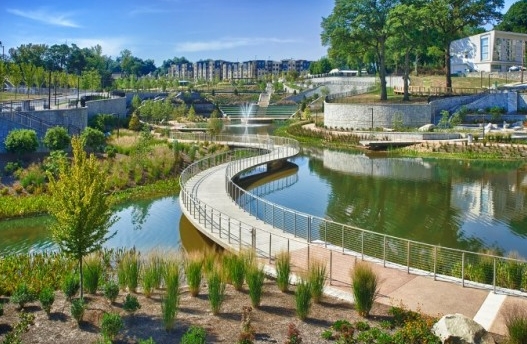Ecological design in landscape architecture is increasingly vital as we face pressing environmental challenges. By integrating sustainable practices in landscape design, we can create spaces that are not only aesthetically pleasing but also beneficial for the ecosystem. This article delves into the principles of ecological design and its impact on landscape architecture.
The Principles of Ecological Design
Ecological design focuses on harmonizing human activity with the natural world. This approach emphasizes the use of native plants, which are adapted to local conditions and support biodiversity. By choosing plants that thrive in their natural habitat, designers can reduce water usage and the need for chemical fertilizers and pesticides. Furthermore, ecological designs often incorporate features like rain gardens and permeable pavements, which help manage stormwater runoff. Through these practices, landscapes can become healthier, more resilient, and ultimately more sustainable.
Creating Biodiverse Spaces
One of the main goals of ecological design is to enhance biodiversity. Diverse ecosystems are more resilient and offer essential services such as pollination, pest control, and climate regulation. Landscape architects can achieve this by integrating a variety of plants, including grasses, shrubs, and trees that provide different habitats and food sources. For example, a well-planned garden can attract butterflies, bees, and birds, supporting local wildlife populations. Additionally, incorporating features like ponds or small wetlands encourages even more species to thrive, creating a rich tapestry of life in urban areas.
Human-Centric Design
While ecological design prioritizes sustainability, it also focuses on creating spaces that are functional and enjoyable for people. This involves designing parks, gardens, and public spaces that encourage outdoor activity and community interaction. Elements such as walking paths, seating areas, and playgrounds can make green spaces more inviting, promoting physical and mental well-being. By fostering a connection between people and nature, landscape architects help cultivate a sense of stewardship toward the environment. This dual approach not only benefits the planet but also enhances the quality of life for residents.
In conclusion, ecological design in landscape architecture is not just a trend; it is a necessary response to environmental pressing issues. By embracing sustainable principles, we can create beautiful and functional spaces that benefit both the ecosystem and the community. If you’re interested in learning more about how you can incorporate ecological design practices in your own surroundings, consider exploring local resources or engaging with community projects. Every small step can make a difference in creating a greener, more sustainable future.

